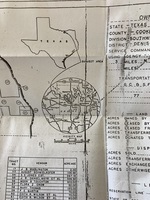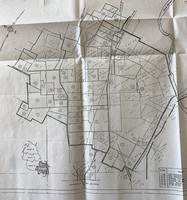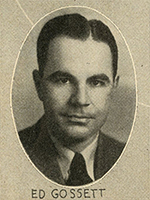Development of Howze
Gainesville before the war, like many other places, had experienced severe setbacks from the Great Depression. When the news of a new Army camp was going to be opened up outside of town though, the citizens of Gainesville welcomed it with open arms. In 1940, Cooke County (where Gainesville is located) was 85% farmland, and a majority of its citizens were farmers and ranchers. The citizens of Gainesville recognized the military buildup happening across the country and decided to take a chance to see if they could benefit from this. Clifford McMahon, Manager of the Gainesville Chamber of Commerce, sent out a letter during the fall of 1940 to the War Department in Washington D.C. and asked if Gainesville could participate in this new military expansion by offering up land for any kind of military facility.
The Army, through the War Department, promptly responded in January of 1941, by replying with a questionnaire for the city officials of Gainesville to fill out. Many of the city officials sided with local business owners in Gainesville because the addition of a new military installation would flood business to Gainesville. But, an overwhelming majority of farmers simultaneously opposed this decision because they would be the ones most negatively impacted. By 18 December 1941, the War Department approves Gainesville for possible construction of a new army facility and would award a local construction company, by the name Rollins and Forrest Construction Firm, in February of 1942 $30,000,000 to construct the future camp. Ed Gossett, the Federal Congressman that represented Gainesville, would inform the Gainesville Daily Register on 20 March 1942 that the city had officially been chosen for the future development by the Army.
A grand total of 58,212.2 acres would be acquired by the Army for the development of the camp, and by the spring of 1942, the first 15 out of 300 families would be told to give up their land, The landowners were told that they could either sell their land to the War Department or have it forcibly seized by the Federal Government, but regardless the land was needed for the war effort. The Federal Government promised the landowners that they would have the first chance to buy their land back after the war. Some former land owners took up the offer and would move back to their old properties but they would soon realize that it was not the same as how they had left it. The construction of Camp Howze had degraded the land to such a degree that, it could no longer be used for any kind of substantial farming. In response, many families would not return to their former properties and would live elsewhere after the war.






